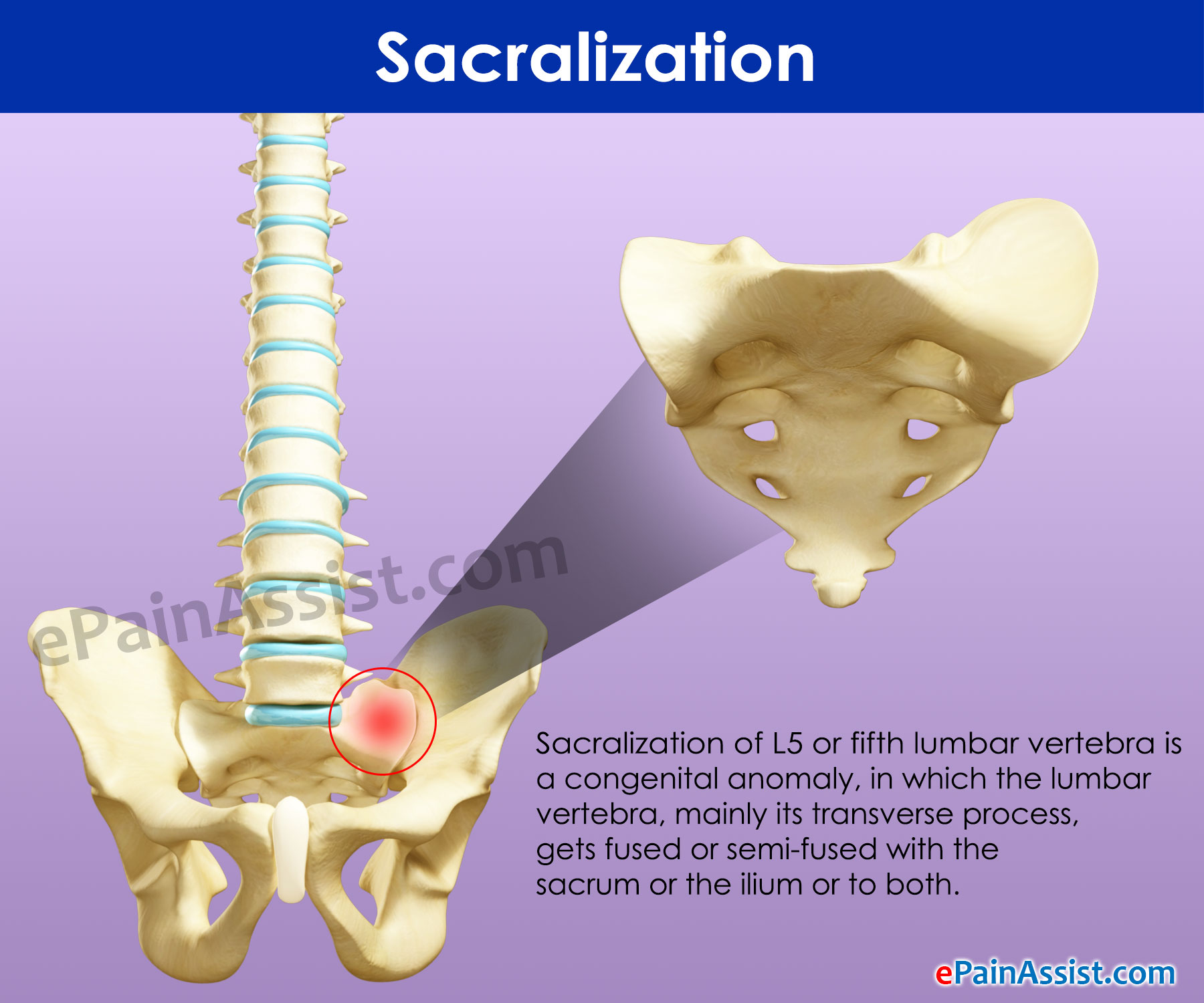Sacralization: What You Need To Know?
In human spine, there are five lumbar vertebrae located above the pelvis. Below this, there are five sacral vertebrae, which are fused, proceeding to the tailbone. The spinal column is formed during the normal embryonic development and each type of vertebra assumes its character and position.
The lumbar region of the spinal column mainly facilitates movement of the back and supports the body weight. The five lumbar vertebrae are designed in a manner that can help its function and are counted from above downwards as L1 to L5. The fifth lumbar vertebra has a peculiar shape and characteristics to suit its normal location and function.
In some cases, during the embryonic development, some changes can cause congenital anomalies, leading to deformities of the vertebral bodies. Such congenital defects in fusion or formation of certain parts can affect individuals in different ways. Sacralization is a congenital condition in which the lumbar vertebra fuses completely or partially with the sacrum on either or both sides.
What Is Sacralization of L5 or Sacralization of Fifth Lumbar Vertebra?
Sacralization of L5 or sacralisation of fifth lumbar vertebra is a congenital anomaly, in which the lumbar vertebra, mainly its transverse process, gets fused or semi-fused with the sacrum or the ilium or to both. This fusion can occur in one or both sides of the body. Sacralization leads to fusion of the L5 (fifth lumbar vertebra) and S1 (first sacral vertebra) and the inter-vertebral disc between them may be narrow.
Due to sacralization, the L5 vertebra appears and works more like the sacral components and hence it is termed as sacralized vertebra. As the fifth lumbar vertebra fuses with sacrum, it is considered as a part of sacrum leaving only four lumbar vertebrae. Hence, the condition is also called as ‘one less vertebra’.
Sometimes it is observed that the lumbar vertebral bodies are not fused, but only the transverse processes may be fused with the sacrum; completely on one side and incompletely on the other side. When fusion or sacralization occurs with sacrum, it is central sacralization and when fusion occurs with the sides of sacrum, it is transverse sacralization (unilateral for one side and bilateral for both sides).
Sacralization of lumbar vertebra may be asymptomatic but is not always clinically insignificant. The sacralized lumbar vertebra, which is normally a non-fused vertebra, may sometimes face challenges in its function after getting fused with the sacrum. As the pattern of sacralization varies from person to person, the associated problems, if any, may also vary in severity and intensity.
While sacralization may not affect at all, it can cause problems in some cases. Sacralization may be at times associated with problems in biomechanics and affect the ways of movement and posture control. In sacralization, the L5 vertebra may not be completely fused along the entire way. Being fused on one side and semi-fused or non-fused on the other side can make the working of the spine difficult. The spinal components above the L5 have to work hard to cope with this, which may cause strain on them.
Some persons with sacralization may present with complaints of back pain, spinal or radicular pain and related signs. Sometimes due to the abnormal fusing of the lumbar vertebra with the sacrum, the lumbar movements can get affected and conditions like lumbar scoliosis can develop. In some cases, lumbar extradural effects can also be seen. As the inter-vertebral disc between L5 and S1 is narrow or thin, there are higher chances of disc herniation. Problems like disc protrusion or prolapse especially between the fourth and fifth disc, degeneration of disc, etc. Sacralization may also be an important consideration in disc surgeries.
Sacralization can affect the centre of gravity at the spinal basis. As the fifth lumbar vertebra gets fused with the sacrum and gets sacralized, the fourth lumbar vertebra becomes the last lumbar vertebra. Hence, the L4 vertebra bears the responsibility of being the seat of spinal movement. However, the L4 vertebra may lack the ability to perform this function like L5 and can cause problems. With a fused L5, it is difficult for L4 to cope with the increased demand, causing over-use and undue strain to the disc between L4 and L5. This can gradually lead to pain and discomfort in the region of low back.
What Is The Treatment For Sacralization?
Sacralized lumbar vertebra can affect spinal movement and put excess stress on the lumbar vertebrae and in-between disc. Proper diagnosis can be done by using imaging studies. Treatment depends on the nature of the anomaly and associated symptoms.
Treatment for Sacralization may include:
- Anti-inflammatory drugs, muscle relaxants for back pain, swelling, inflammation. Injections and steroid treatment may be considered.
- Manual therapy, muscle or radicular technique if appropriate.
- Surgical treatment may be considered for cases requiring correction.
- Physiotherapy for low back pain, weakened muscles, sciatic nerve pain, nerve symptoms and spinal traction in certain cases. Use of lumbar belt or corset to reduce pain, inflammation and reduce movement to protect back muscles as advised by physician.
- Exercises for strengthening and stretching of back muscles depending on the condition should be followed as advised. Training of proper use of back and abdominal muscles can help in keeping the back muscles strong and flexible.
As there are many causes of back pain, further studies are required to determine the link between sacralization and back pain.
Also Read:


